Nature Chemistry




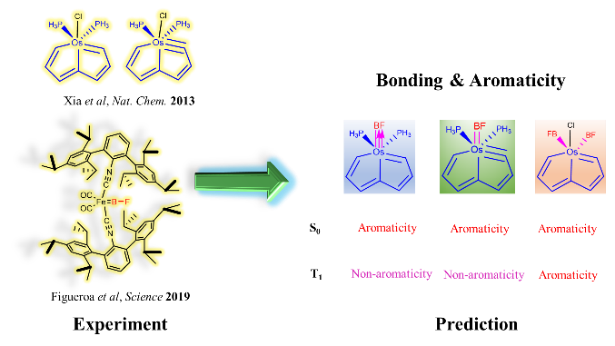
Osmapentalyne and osmapentalene complexes, now termed as carbolong species, have attracted considerable attention due to their novel structures, reactivities, chelating properties as well as Möbius and adaptive aromaticity. On the other hand, boron monofluoride (BF), a 10-electron diatomic molecule isoelectronic to carbon monoxide (CO), is unstable below 1800°C in the gas phase, and preparation of its metal complex is particularly challenging.

Due to consumption of more than 2% of the world's annual energy supply by Haber–Bosch process and the strongest triple bond (N≡N) in nature, directly coupling N 2 with small molecules is particularly important and challenging, let alone in a catalytic fashion. Here we first demonstrate that a NNN-type pincer phosphorus complex could act as a catalyst to couple dinitrogen with a series of small molecules including carbon dioxide, formaldehyde, N-ethylidenemethylamine, and acetonitrile in the presence of diborane(4) under a mild condition by theoretical calculations.
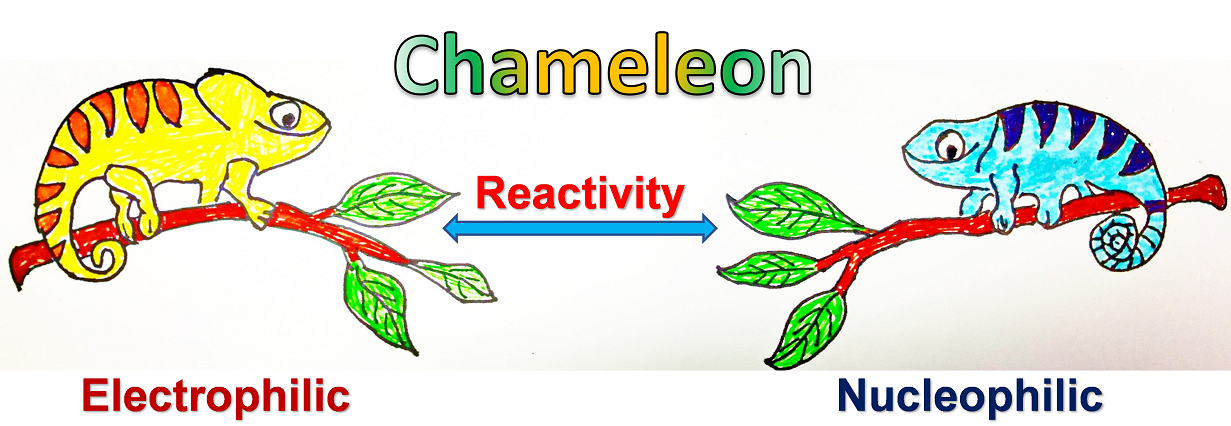
Ambiphilic reactivity is a fascinating topic in chemical reactions, attracting considerable interest because ambiphilic reagents can display properties of both nucleophilicity and electrophilicity. However, most of the previous attention has been focused on the characterization of the ambiphilic reactivity, whereas the origin is less understood. Here we carry out thorough density functional theory (DFT) calculations to probe the origin of the ambiphilic reactivity of the carbyne atom in osmapentalynes, observed previously in experiment.

As a fundamental concept in chemistry, aromaticity has been extended from traditional organics to organometallics. Similarly, hyperconjugative aromaticity (HCA) has also been developed from main group to transition metal systems through the hyperconjugation of the substituents. However, it remains unclear that how the oxidation state of transition metal in the substituents affects the HCA. Herein, we demonstrate via density functional theory calculations that HCA could disappear in indoliums when the Au(I) substituents are changed to the Au(III) ones.

As the strongest triple bond in nature, the N≡N triple bond activation has always been a challenging project in chemistry. On the other hand, since the award of the Nobel Prize in Chemistry in 1950, Diels‐Alder reaction has served as a powerful and widely applied tool in the synthesis of natural products and new materials. However, the application of Diels‐Alder reaction to dinitrogen activation remains less developed.
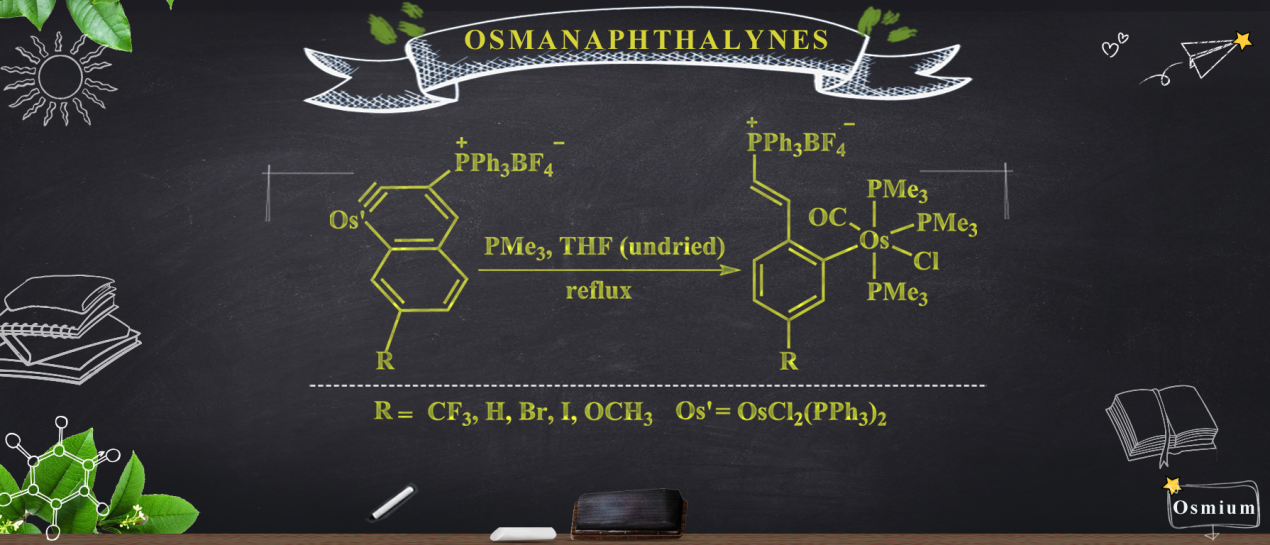
Members of a new class of complexes, 2(CF3), 2(H), 2(Br), 2(I), and 2(OCH3), have been synthesized by a one-pot method involving the treatment of osmanaphthalynes bearing corresponding substituents (1(CF3), 1(H), 1(Br), 1(I), and 1(OCH3) with trimethylphosphine (PMe3) and water (H2O).
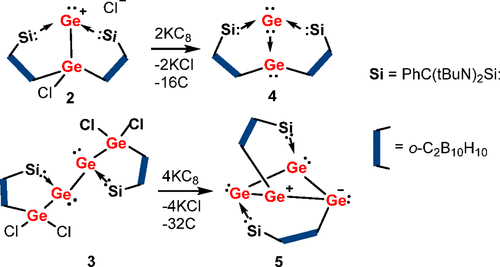
The first Ge(0)–Ge(II) germylone–germylene-paired Ge2 complex (LSi)2Ge2 (4) and the molecular Ge4 cluster (LSi)2Ge4 (5) supported by the chelating carbanionic ortho-C,C′-dicarborandiyl-silylene ligand LSi [L = C,C′-C2B10H10, Si = PhC(tBuN)2Si] have been synthesized and isolated via reduction of the corresponding precursors chlorogermyl-germyliumylidene chloride (2), [(LSi)2Ge(Cl)Ge]+Cl–, and (LSi

Activation of atmospherically abundant dinitrogen (N2) by metal-free species under mild reaction conditions has been one of the most challenging areas in chemistry for decades. Very recent but limited progress in N2 activation by boron species, including two-coordinated borylene and methyleneborane and three-coordinated borole and borane, has been made toward metal-free N2 activation.
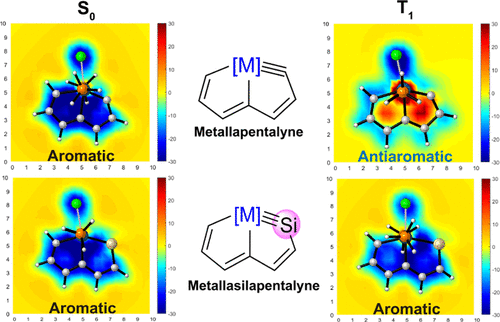
Cyclic molecules with 4n + 2 or 4n electrons are aromatic in the lowest singlet state (S0) or the lowest triplet state (T1) according to Hückel and Baird’s rules. Thus, the design of aromatic species in both the S0 and T1 states (termed as adaptive aromaticity) is particularly challenging. In this work, we demonstrate that metallasilapentalynes show adaptive aromaticity supported by structural, magnetic, and electronic indices, in sharp contrast to metallapentalynes, which exhibit aromaticity in the S0 state only.
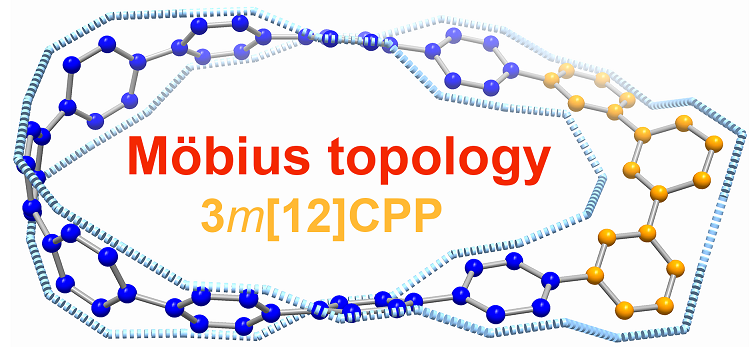
Carbon nanohoop, a class of constrained molecular architecture consisting of linked arene units, has attracted considerable interest from both experimental and theoretical chemists due to their synthetic challenge and aesthetic architectures. Another fascinating and synthetically challenging species, the Möbius-type molecule, has been attracting the scientific community with its elegant structure and aromaticity. Thus, combining two things together, synthesizing a carbon nanohoop with Möbius topology remains more challenging to date.
Copyright © 2026,
Theme Originally Created by Devsaran
